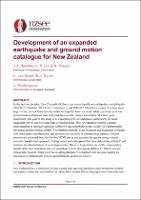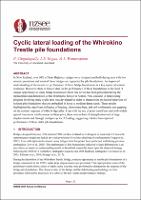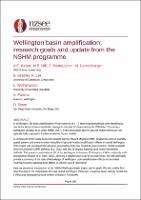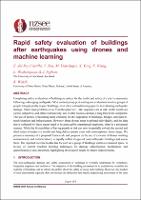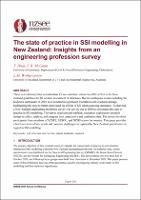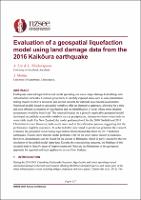Search
Now showing items 1-6 of 6
Development and implications of an expanded national earthquake catalogue for New Zealand
(New Zealand Society for Earthquake Engineering, 2021-04-14)
In the last two decades, New Zealand (NZ) has experienced significant earthquakes, including the 2010 M 7.2 Darfield, 2011 M 6.2 Christchurch, and 2016 M 7.8 Kaikōura events. Amongst these large events, tens of thousands ...
Monotonic and Cyclic Pushover Testing of Isolated Piles of the Whirokino Trestle
(New Zealand Society for Earthquake Engineering, 2021-04-14)
In New Zealand, over 60% of State Highway bridges were designed and built during eras with low seismic provisions and most of these bridges are supported by pile foundations. An improved understanding of the in-service ...
Wellington basin amplification: research goals and update from the National Seismic Hazard Model Programme
(New Zealand Society for Earthquake Engineering, 2021-04-14)
In Wellington, 3D basin amplification effects observed at 1 – 2 second spectral periods were identified as one factor likely to have exacerbated damage to mid-rise structures during the 2016 Mw 7.8 Kaikōura earthquake ...
Rapid, automated, post-earthquake building assessment using a swarm of drones and machine learning techniques
(New Zealand Society for Earthquake Engineering, 2021-04-14)
Completing safety evaluations of buildings is critical for the health and safety of a city’s community following a damaging earthquake. Most contemporary post-earthquake evaluations involve groups of people who physically ...
The State of Practice in SSI Modelling in New Zealand: Insights from an Engineering Profession Survey
(New Zealand Society for Earthquake Engineering, 2021-04-14)
There is a relatively brief consideration for soil-structure interaction (SSI) effect in the New Zealand guidelines for the seismic assessment of structures. Recent earthquake events including the Kaikōura earthquake of ...
Evaluation of a geospatial liquefaction model using land damage data from the 2016 Kaikoura earthquake
(New Zealand Society for Earthquake Engineering, 2021-04-14)
Earthquake induced liquefaction and lateral spreading can cause major damage to buildings and infrastructure networks. Common procedures to identify exposed areas such as cone penetration testing require extensive resources ...

